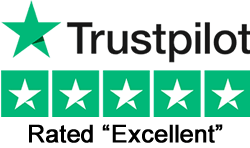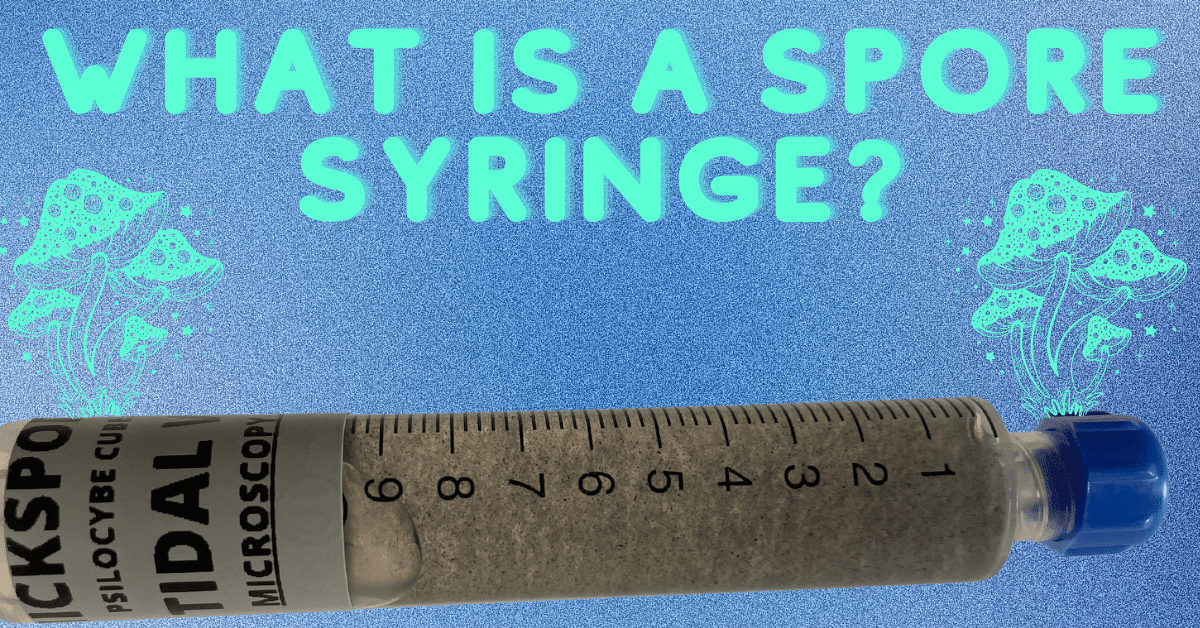
Have you ever seen a mysterious, small glass vial filled with a dark liquid? If so, chances are it’s a mushroom spore syringe. This specialized tool is essential for growing mushrooms of all shapes and sizes – from the tiniest button mushroom to the biggest portobello. But what exactly is a mushroom spore syringe, and why does it matter? This article will explore this unique object and how a spore syringe can be used.
Mushroom spores are microscopic particles found in the environment that act as part of the reproductive cycle of fungi. These tiny particles contain genetic information that enables them to grow into mature mushrooms when certain environmental conditions exist. A mushroom spore syringe is an instrument designed to collect these minuscule spores and transport them safely to their intended destination.
Collecting and transporting mushroom spores requires precise attention to detail and careful observation. It also involves using the right tools – like a sterilized needle or syringe – to ensure successful germination without contamination or loss of spore viability. By understanding how to use a mushroom spore syringe correctly, anyone can quickly cultivate a healthy crop of mushrooms at home!
A mushroom spore syringe is used to inoculate substrate with spores to grow mushrooms. It consists of a medical-grade syringe filled with sterile water and spores from the desired species, which can then be injected into prepared substrates or other mediums. Using the spore syringe allows for precise control over where and how much fungus is grown, allowing for improved yields in more extensive operations and greater accuracy when attempting to reproduce specific varieties of mushrooms.
In summary, mushroom spore syringes are essential for cultivating fungi due to their ability to accurately introduce high-quality spores into a suitable environment without contaminating them. With proper precautions taken during preparation, storage, and distribution, they can provide reliable results that are reproducible across multiple batches.
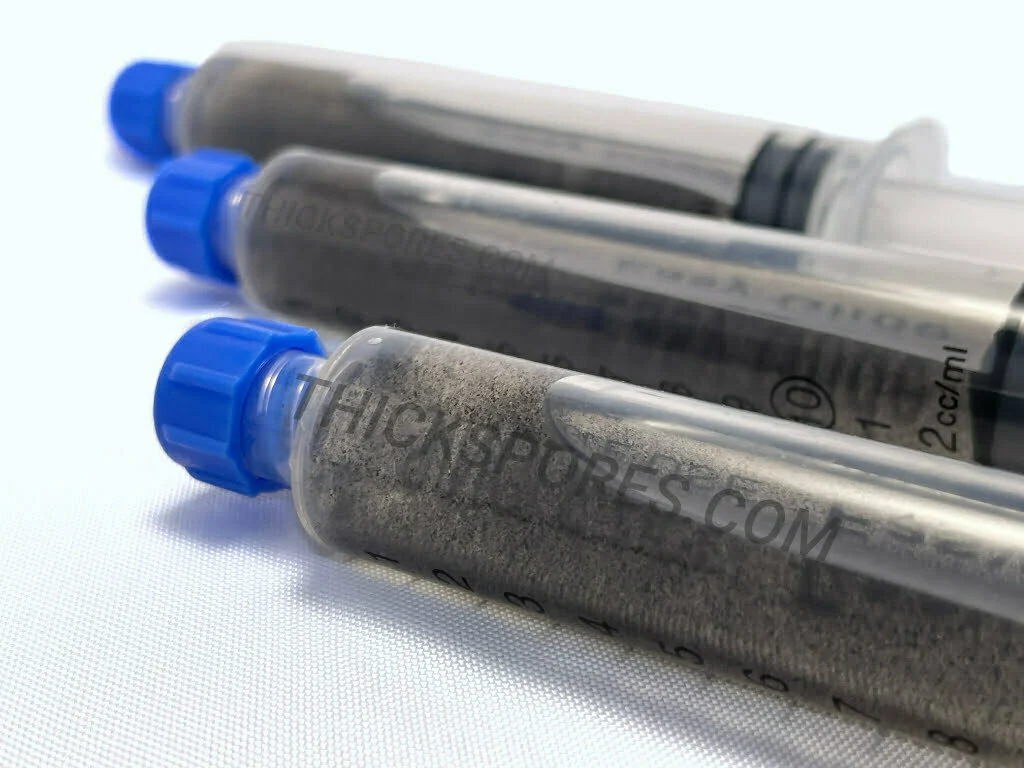
The use of a mushroom spore syringe offers numerous benefits. First and foremost, it is an efficient means of introducing spores into a substrate medium for the cultivation of mushrooms. This can be done without the complexity of spreading them by hand or using other methods that may not work as effectively. Additionally, spores from a spore syringe are generally easier to manage than attempting to collect them on your own to introduce them into a fruiting chamber.
Furthermore, when used correctly, a mushroom spore syringe can provide consistent results for those looking to cultivate mushrooms at home. Introducing spores into the desired medium is made much simpler with its use because it eliminates any guesswork associated with spreading the spores evenly throughout an area. With this tool, anyone can precisely measure how many spores they want to be introduced into their substrate while ensuring that they are uniformly distributed within the container.
In addition, the process of inoculating substrates with a mushroom spore syringe takes significantly less time than traditional methods, such as manually collecting and scattering individual spores. As such, growers have more time for other tasks, which could help expedite their overall cultivation efforts. Utilizing a mushroom spore syringe is one of the most convenient ways to ensure successful yields when cultivating mushrooms at home.
The correct usage of a spore syringe requires careful attention to detail to avoid contamination that could lead to failed attempts at cultivation. This includes selecting an appropriate sterilized surface on which to place the injection site, ensuring all material touched during preparation is clean and free from bacteria and avoiding contact between the needle tip and anything else while filling or injecting it. Additionally, proper storage techniques should be employed before and after use to minimize any risk of spoilage or growth of unwanted organisms.
With proper planning and efficient execution of these steps, mushroom growers can rest assured that their mushroom cultures will remain safe from contamination due to inadequate preparation techniques. As long as care is taken throughout the entire procedure – including sterilization of instruments and accurate measurements of substances – mushroom enthusiasts will enjoy success and satisfaction with every batch they produce.
Using the spore syringe to inoculate the substrate requires careful preparation. Firstly, shake or swirl the contents of the syringe until they are mixed evenly throughout. Then, flame sterilize any tools used in opening jars or bags containing the desired substrate material. Wheat straw, coco coir, or composted cow manure is commonly used for fruiting mushrooms. Once these steps have been completed, use caution when inserting the needle tip into the inoculated medium. Some substrates may require more pressure than others for proper penetration. Finally, disperse the spores around each jar/bag, and spread them out reasonably evenly within its confines.
The entire procedure should take no longer than fifteen minutes from start to finish if done correctly. Properly executed inoculations result in colonization times ranging between 2 weeks to two months, depending on environmental conditions and species chosen for culturing. Careful observation during incubation helps ensure success when attempting to cultivate mushrooms using a spore syringe.
Mushroom spore syringes and liquid cultures are two ways to inoculate substrates with mushroom spawn. Lets go over the differences between spores and liquid culture. Here are four points summarizing the key differences between these two methods:
In summary, spore syringe and liquid culture offer distinct advantages depending on the user’s goals; understanding those pros and cons will help decide which option should be employed for successful mushroom cultivation endeavors.
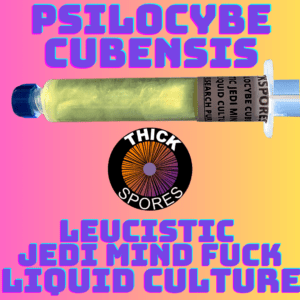
The two primary methods of acquiring mushroom spores for cultivation are spore prints and spore syringes. A spore print is created by carefully harvesting a mature mushroom cap, then pressing it onto paper or glass to collect the fine spores on its surface. The collection process can be laborious and time-consuming but ultimately yields a viable source of material for injection. On the other hand, a spore syringe is an easier option as it contains pre-prepared liquid culture stock loaded with microscopic spores ready for use.
Spore prints offer some key advantages over their syringe counterparts:
However, compared to using agar plates inoculated with spore prints, there are still several benefits to be found in opting for a mushroom spore syringe. Firstly, they require minimal equipment and preparation time since all one needs to do is simply remove the lid and inject it into whatever medium has been chosen. Secondly, this method guarantees consistent results between each application, given the uniformity of the product due to prior sterilization processes conducted before bottling. Finally, mushroom spore syringes eliminate any risk of cross-contamination thanks to individually sealed containers which ensure maximum sterility throughout.
In summary, while mushroom spore prints and syringes offer numerous benefits when cultivating mushrooms, depending on individual needs, either may be better suited. Ultimately, however, careful consideration should be taken when choosing which route best fits personal requirements to ensure successful harvests moving forward.
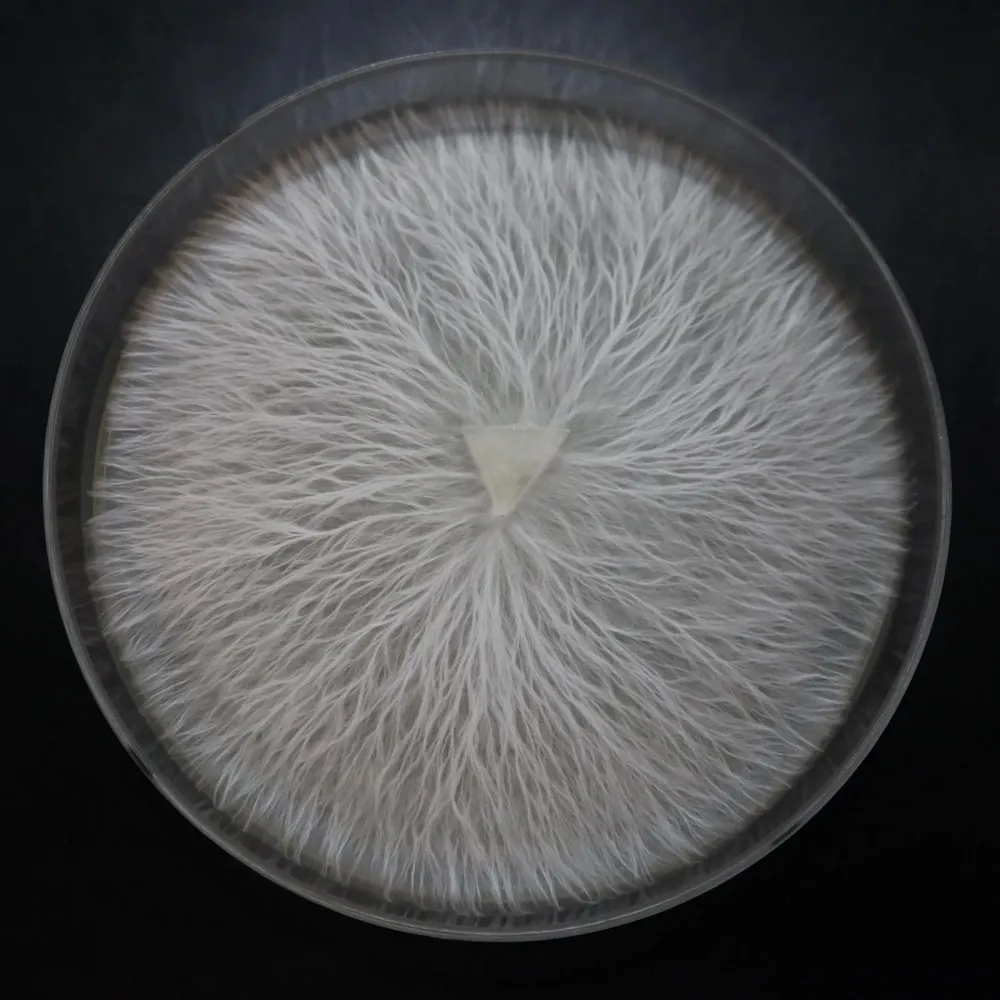
To use a mushroom spore syringe, one needs the proper equipment. An essential piece of equipment is, of course, the spore syringe itself. A typical spore syringe consists of an airtight container with a luer lock fitting on one end and a plunger sealed inside. On the other end is a needle designed for precision injection into a growth medium such as agar or liquid cultures.
Another necessary item for effectively using a spore syringe is a sterile technique when handling it. This involves wearing protective clothing, using sanitized tools and surfaces, and avoiding contact between contaminants and the spores. Additionally, all containers should clearly be marked with the strain or species name to differentiate them from each other during the inoculation process.
Finally, it’s important to note that while a mushroom spore syringe can be used for making prints on agar plates, this method may not produce reliable results compared to using an actual spore print. Therefore, users must decide which approach best suits their desired outcome before beginning their project.
Making a mushroom spore syringe is easy, provided one has the proper materials and follows safety guidelines. First, gather sterilized equipment such as a glass jar, lids for the pots, alcohol pads, and sterile syringes. It’s vital to ensure that all surfaces are clean and free from contamination before starting.
Next, obtain the spores, purchased online or gathered in nature by experienced foragers. Wear gloves, so you don’t contaminate the spores with bacteria from your hands when handling them. Once you have collected them, put them into the glass jar filled halfway with distilled water. Put the lid on tightly, shake it vigorously for about five minutes, and then let it stand overnight.
Afterward, remove the lid and fill up the jar with more distilled water until it’s approximately two-thirds full then, use an alcohol pad to swab the area around where you plan to insert the needle of your sterile syringe. Make sure not to touch anything else! Next, insert it slowly but carefully into the concoction while avoiding contact with other items if possible. Finally, draw back on the plunger until the desired solution is acquired. TIP: Label your spore syringes immediately after they are created, so you won’t forget what type was used in each instance!
Mushroom spore syringes are essential for cultivating mushrooms and should be stored properly to ensure that the spores remain viable. Keep in mind the following points regarding spore syringe storage: First, storing the spore syringe away from direct sunlight and heat of any kind is essential. This helps prevent the spores inside from becoming damaged or inactive. Secondly, place the spore syringe in a cool area indoors or outdoors; temperatures between 40-50 degrees Fahrenheit are ideal. Thirdly, ensure that the container used to house the spore syringe is airtight to preserve its sterility until use. Finally, if possible, rotate multiple batches of spore syringes rather than relying on one batch over time – this will help increase your chances of successful results when using them for cultivation later on.
For those looking to cultivate their mushrooms at home, storing their mushroom spore syringes correctly can make all the difference in achieving positive outcomes down the line. It’s best not only to keep these spores out of direct sunlight and heat but also in an environment where the temperature remains relatively consistent – ideally somewhere around 40-50 degrees Fahrenheit. Furthermore, having access to more than one batch of spores gives you much greater flexibility regarding actual growth cycles. With just a few simple steps taken ahead of time, such as proper storage techniques – success rates with mushroom growing can improve significantly!
Many people wonder if it is possible to freeze a spore syringe, but unfortunately, the answer is no. When frozen, the water inside the spores will expand, resulting in the cell wall rupturing and the spores dying.
When discussing the shelf life of a mushroom spore syringe, it is essential to note that spores are relatively resilient and can remain viable for many years. As such, when stored correctly in an environment that does not contain extreme temperatures or humidity levels, a mushroom spore syringe will typically last up to one year under optimal conditions. However, the spores could become damaged and no longer viable if exposed to too much heat or moisture.
The best way to safeguard against this type of damage is by storing the mushroom spore syringes in a cool, dark place away from direct sunlight and other sources of warmth or moisture. Additionally, some users keep their spores at very low temperatures, which helps preserve them even further; however, this requires specialized equipment like deep freezers, which may be impractical for most consumers.
To ensure you get the total value out of your spores syringe purchase, it is recommended that they be used within the first year after purchase. This will help ensure that you end up with viable mushrooms instead of wasting time and money on non-viable spores. Proper care and storage should also be considered, along with any additional instructions provided by the manufacturer during usage.
Reusing a mushroom spore syringe is an effective way to save money and reduce waste. A mushroom spore syringe is used for inoculating substrates with mushroom spores, allowing the mushrooms to grow and be harvested. In addition, reusing the same spore syringe multiple times can keep it in good condition and extend its shelf life. Here are five tips on how to properly reuse a mushroom spore syringe:
By following these steps, users can get more out of their investment while also helping protect our environment through reduced plastic consumption and waste production – something we should all strive for!
Mushroom spore syringe and spore print are two methods used to propagate mushrooms. While both offer a viable option for mushroom cultivation, there is still some debate about which is best.
A spore print takes the spores from the gills of a mature mushroom cap and transfers them onto paper or foil. The advantage of this method is that it can be stored in a refrigerator for up to six months and produce multiple generations of mushrooms with little effort on the part of the cultivator. On the other hand, because only one generation of mushrooms can be propagated at a time, cultivating more significant amounts requires more work.
In contrast, a mushroom spore syringe contains live spores suspended in sterile water, making it easier to introduce into growing mediums like agar plates or substrate blocks. This makes it possible for cultivators to not only quickly grow several generations but also clone specific strains of mycelium by taking samples from existing cultures. However, unlike spore prints, which last indefinitely when appropriately refrigerated, once opened, mushroom spore syringes must be used within 24 hours before they become contaminated.
Given these pros and cons associated with each type of propagation method, deciding which one is better depends on the results you’re looking for and how much effort you’re willing to put in. For example, suppose your goal is large-scale production. In that case, a mushroom spore syringe may be preferable due to its ability to quickly generate multiple generations, while cloning specific strains has never been simpler than with this tool. Alternatively, suppose storage space isn’t an issue, and you have no need to produce numerous generations at once. In that case, a classic spore print could be your best bet, as it requires minimal labor while having long-term viability when kept cool and dry.
The process of mushroom spore germination is complex and depends on various factors. To get an accurate estimate of the time it takes for spores to germinate, one must consider the environmental conditions. Temperature, humidity levels, air circulation, light exposure, substrate nutrition, and other variables affect the growth rate.
Mushroom mycelium can be expected to begin evident in about three days under ideal conditions; however, this timeline may vary depending on how favorable or unfavorable the environment may be. Any changes in these parameters could alter the duration significantly. For instance, temperatures below 60 degrees Fahrenheit will result in slower development, while higher temperatures speed up colonization times.
In some cases may take weeks before significant evidence of mycelial growth is visible after inoculation with spores. Therefore, the only way to accurately gauge the progress of mushroom spore germination is by consistently monitoring environmental conditions and observing any physical changes over time.
Mushroom spores are part of the reproductive system of fungi and can be found throughout nature. They contain all the genetic information necessary for a new organism to form but also have other potential risks. Therefore, handling mushroom spores carries specific hazards that must be considered before engaging in any activity involving their use.
To begin with, some mushrooms contain toxins or chemical compounds that can irritate skin or cause rashes upon contact. Even if the spore is not directly exposed to the skin, it may still create an inhalation hazard as airborne particles could be inhaled into the lungs. Secondly, there is always a risk of contamination when handling mushroom spores due to bacteria, viruses, and molds in the environment. Finally, improper storage and handling techniques can potentially lead to cross-contamination between different types of mushrooms.
The question of whether a mushroom spore syringe is more expensive than a spore print requires further consideration. While many factors come into play, it is essential to remember that the cost of each item will depend on its availability and quality.
Regarding availability, spore prints can be relatively easy to obtain from online retailers or local stores. By contrast, mushroom spore syringes may require special ordering due to their delicate nature, making them potentially harder to find and thus making them more expensive. Additionally, because they need careful handling to preserve sterility, this also increases the cost of acquiring one.
When considering the quality factor, it should be noted that although both types of spores are natural products, spore prints may tend towards lower levels of purity as they often involve manual collection procedures, which can lead to contamination by other organisms or foreign material. On the other hand, mushroom spore syringes typically provide higher levels of purity thanks to laboratory-controlled conditions and filtration processes used during production. This results in a superior product with an increased price point compared to buying a spore print.
It becomes evident then that the answer depends mainly on what type of product you seek: for ease and accessibility, go for a spore print; for high quality and greater peace of mind, choose a mushroom spore syringe.
A mushroom spore syringe is an invaluable tool for the cultivation of various mushrooms. The syringe contains a suspension of spores collected from one particular mushroom species. When injected into suitable mediums such as compost or agar, the spores germinate to produce the desired type of mushroom.
The range of mushrooms that can be grown using this method depends on what spores are contained in the syringe; many edible species can be cultivated, including shiitake, oyster, reishi, and lion’s mane mushrooms. In addition, some psilocybin-containing mushrooms like Panaeolus cyanescens, and Psilocybe cubensis spores can also be propagated with a spore syringe.
Spore syringes offer vast potential for home cultivators looking to grow their fungi. Still, it’s essential to purchase them from a reliable source due to varying regulations concerning certain mushroom species. However, with proper care and attention, these tools give users access to high-quality mushrooms from just a few simple ingredients.
The popularity of mushroom spore syringes has steadily increased over the past few years due to their convenience and ease of use. Mushroom spores, contained in a sterile solution, are injected into substrates such as grain or sawdust for quick germination and growth. The speed at which these spores can germinate depends on temperature, humidity, light levels, and other factors. Not only can edible mushrooms be grown from these solutions, but also medicinal varieties with therapeutic benefits.
When handling mushroom spores, it is vital to take proper safety precautions; however, they are not considered dangerous if handled correctly. In addition, spore syringes may appear more expensive than spore prints initially; however, when factoring in the time savings associated with the syringe method, this cost quickly becomes negligible. Lastly, a spore syringe can grow an array of mushrooms, including oyster mushrooms, shiitake mushrooms, maitake mushrooms, and many others.
In conclusion, mushroom spore syringes provide an effective method for growing various fungi relatively quickly while providing adequate safety measures during handling. In addition, they offer a convenient alternative to traditional methods that require extra preparation without sacrificing quality or results. Thus, they are ideal for amateur mycologists interested in cultivating their crop of delicious and potentially beneficial mushrooms.
